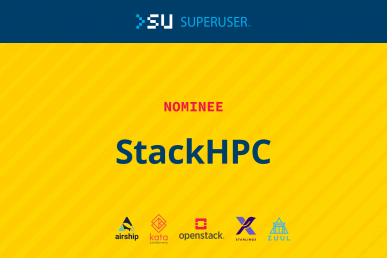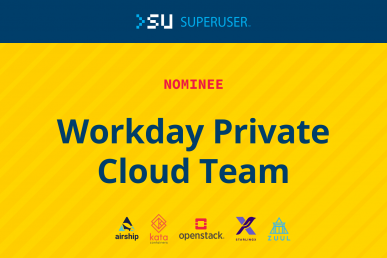It’s time for the community to help determine the winner of the 2020 Open Infrastructure Summit Superuser Awards. The Superuser Editorial Advisory Board will review the nominees and determine the finalists and overall winner after the community has had a chance to review and rate nominees.
Now, it’s your turn.
LINE is one of eight nominees for the Superuser Awards. Review the nomination criteria below, check out the other nominees and rate them before the deadline September 28 at 11:59 p.m. Pacific Daylight Time.
Rate them here!
Who is the nominee?
LINE
How has open infrastructure transformed the organization’s business?
First of all, our open infrastructure extremely reduces time to deliver a new LINE service to end users. Delivery time of infrastructure for a new service decreased from one week to 10 mins.
The operational cost of infrastructure has decreased. After building our infrastructure, the infrastructure team can manage all service’s infrastructure like a centralized management system. Each app developer doesn’t need to care for their infrastructure operation, availability, etc., so they can focus on delivering value to end users.
The standardized and open API, e.g. OpenStack API, helps our global offices and engineers. The API helps communication between the app team and infra team, and also enables both the app team and infra team to build more advanced applications and infrastructure on top of it.
How has the organization participated in or contributed to an open source project?
Our open infrastructure project started four years ago when we were trying to fix a bug we hit in OSS community especially in term of scaling. For OpenStack, we shared some issues and its fix we hit in RabbitMQ scaling and operation. We also joined the Large-scale SIG to discuss scaling issue of OpenStack cluster. As part of the Large-scale SIG, one of our activities was to develop and launch oslo.metrics project, which visualizes OpenStack Oslo messaging layer metrics to OpenStack admin, and another was to participate in the OpenDev event as a Program Committee member and session moderator.
In the Kubernetes and related OSS community, we reported bugs and pushed patches upstream. We hit issues in the data plane software when we scaled our cloud. We also contributed to fixing the network scaling issue in FRR community.
What open source technologies does the organization use in its open infrastructure environment?
To build our open infrastructure: OpenStack, Kubernetes, Rancher, Ceph, Kafka, Knative, elasticsearch, MySQL, RabbitMQ, GlusterFS, Jenkins, DroneCI, HAProxy, Ansible, Redis, RabbitMQ, FRR, Nginx, PowerDNS, dnsmasq, libvirt, Linux.
Our open infrastructure services to app developers: OpenStack basic functionalities, Kubernetes, Kafka, Redis, MySQL, elasticsearch, LB, Ceph.
What is the scale of your open infrastructure environment?
We have 50,000+ physical servers including baremetal servers and hypervisors across four regions. The number of VM instance is 67,000+ total, and the largest region has 31,000+ VM instances. 80% of new instance creation is done by OpenStack and virtualized now.
We also manages 350+ Kubernetes clusters and the number of node is 5,400+ nodes. The amount of data managed in Ceph cluster is 17 PB across three regions.
The possible amount of end users of the infrastructure is 180+ million global users.
What kind of operational challenges have you overcome during your experience with open infrastructure?
We use OpenStack Keystone as a unified authorization system in our infrastructure and introduced “Request-id” concept of OpenStack to non-OpenStack OSS management.
Our infrastructure serves lots of managed services like Kubernetes clusters, MySQL, Elasticsearch in addition to VMs. All the services run as microservice architecture (MSA). Keystone is an identity service in MSA. By applying the Keystone concept to non-OpenStack services, it’s really easy to integrate all services as our infrastructure, and app developers can operate all of our open infrastructure by Keystone’s token.
The purpose of the “Request-id” concept is to track user’s requests among microservices. By adapting the “Request-id” concept, it makes it easier for the infra operator to investigate the problem when a user request fails and investigation is required.
How is this team innovating with open infrastructure?
- Some core components, e.g. OpenStack Keystone, are deployed geographically different area for the DR purpose.
- Some business and security policy are integrated with our open infrastructure in API layer.
- Unified infra back office GUI is developed to managed all our infrastructure services.
- Standardized infra control node operations are realized by deploying the node on to shared Kubernetes cluster.
- CLOS network architecture is introduced in order to scale and to reduce operational cost.
- SRv6 network mechanism is introduced to handle multitenancy network for some special projects.
Each community member can rate the nominees once by September 28 at 11:59 p.m. Pacific Daylight Time.
- Exploring the Open Infrastructure Blueprint: Huawei Dual Engine - September 25, 2024
- Open Infrastructure Blueprint: Atmosphere Deep Dive - September 18, 2024
- Datacomm’s Success Story: Launching A New Data Center Seamlessly With FishOS - September 12, 2024

)










